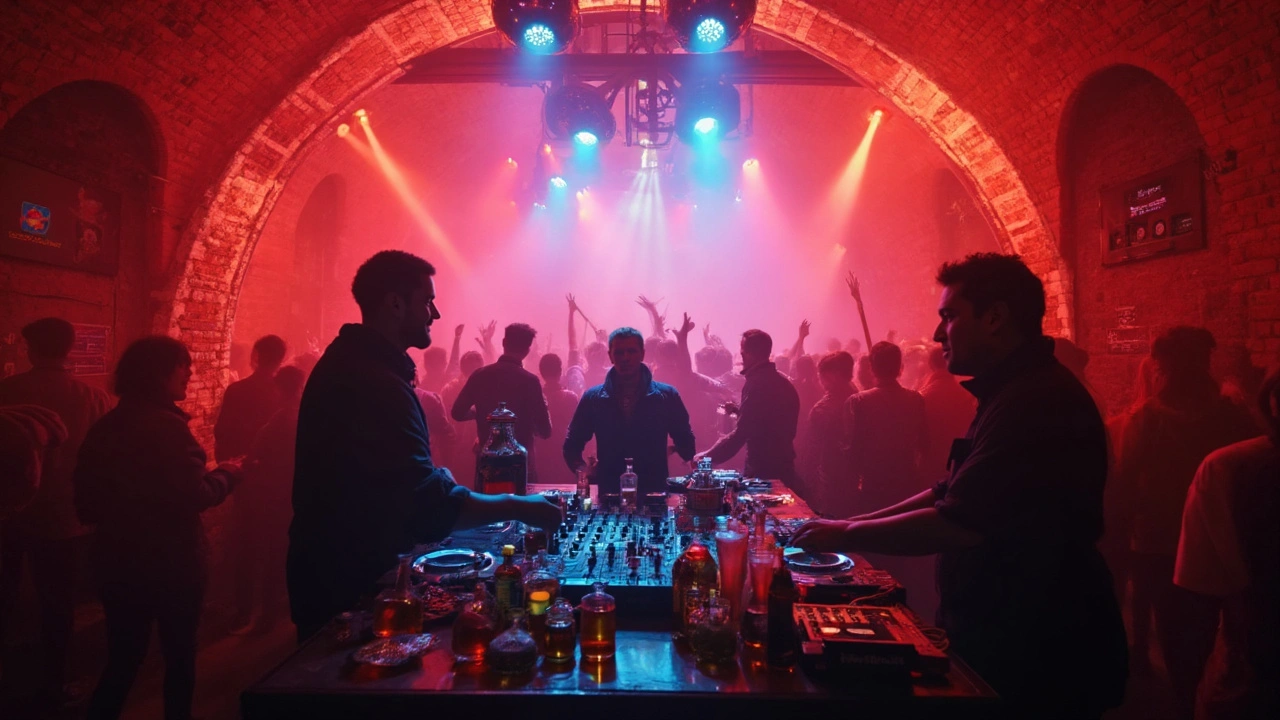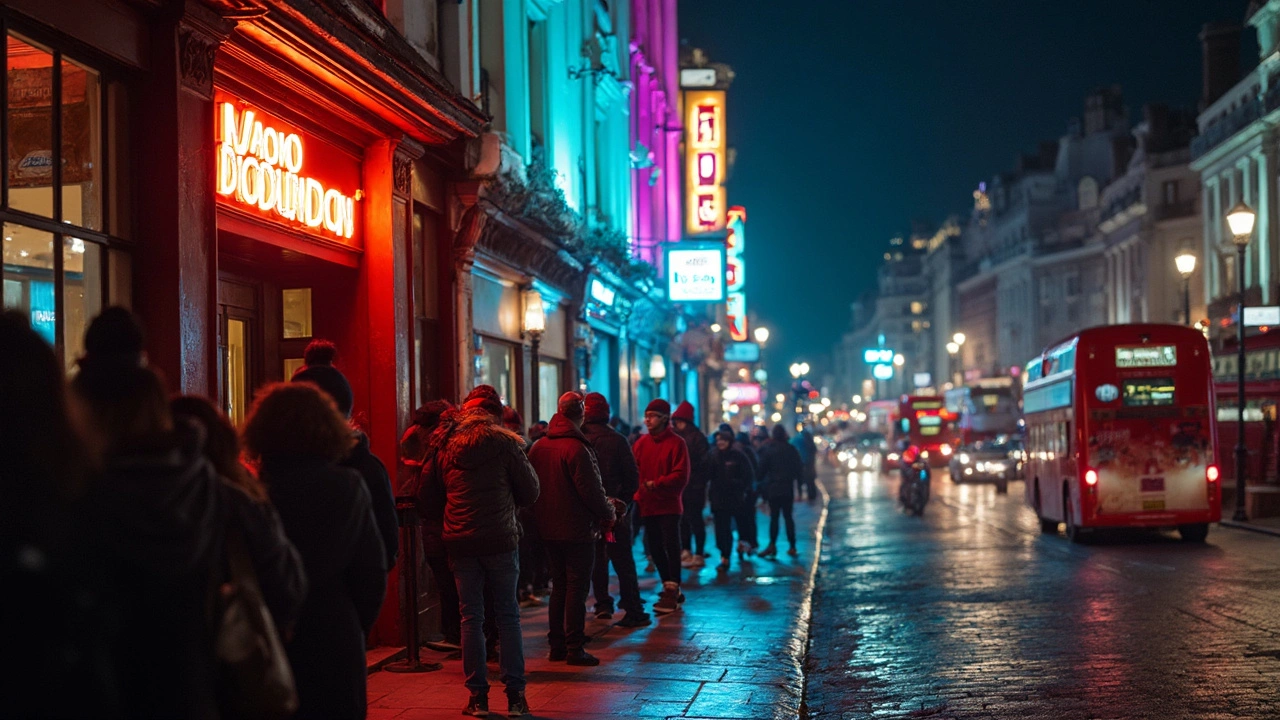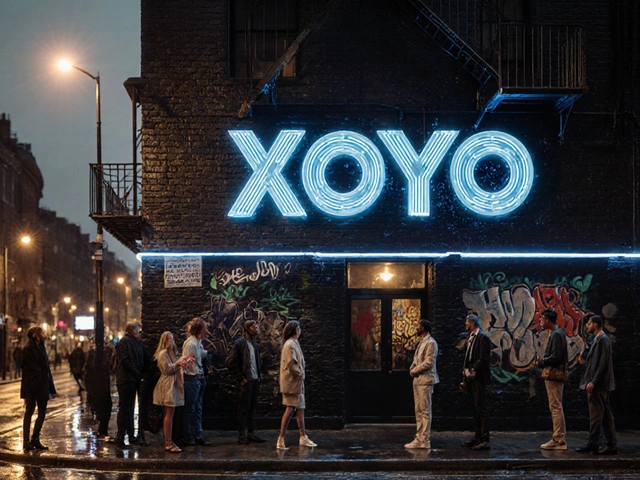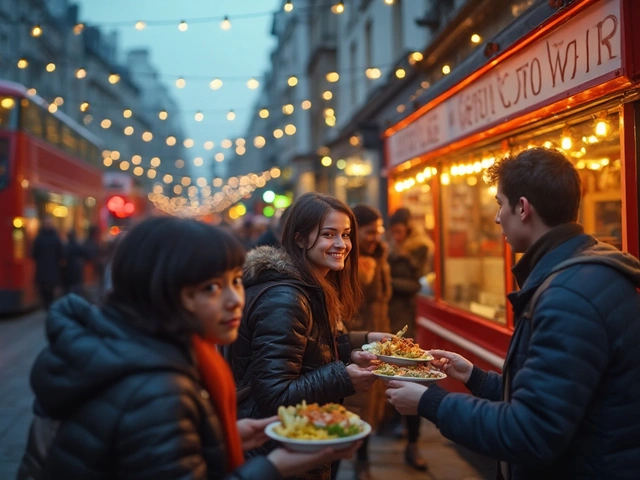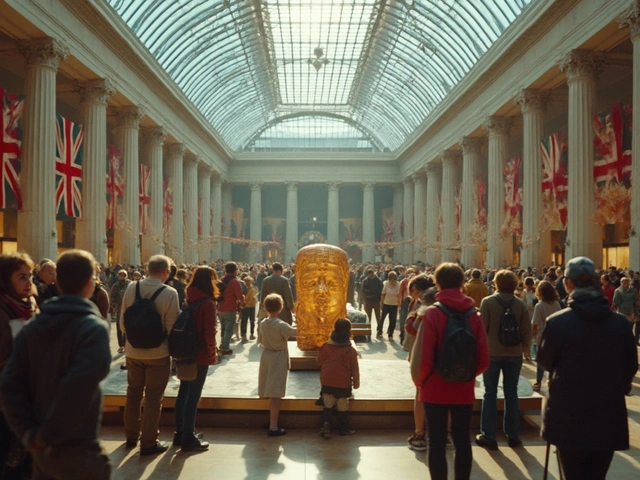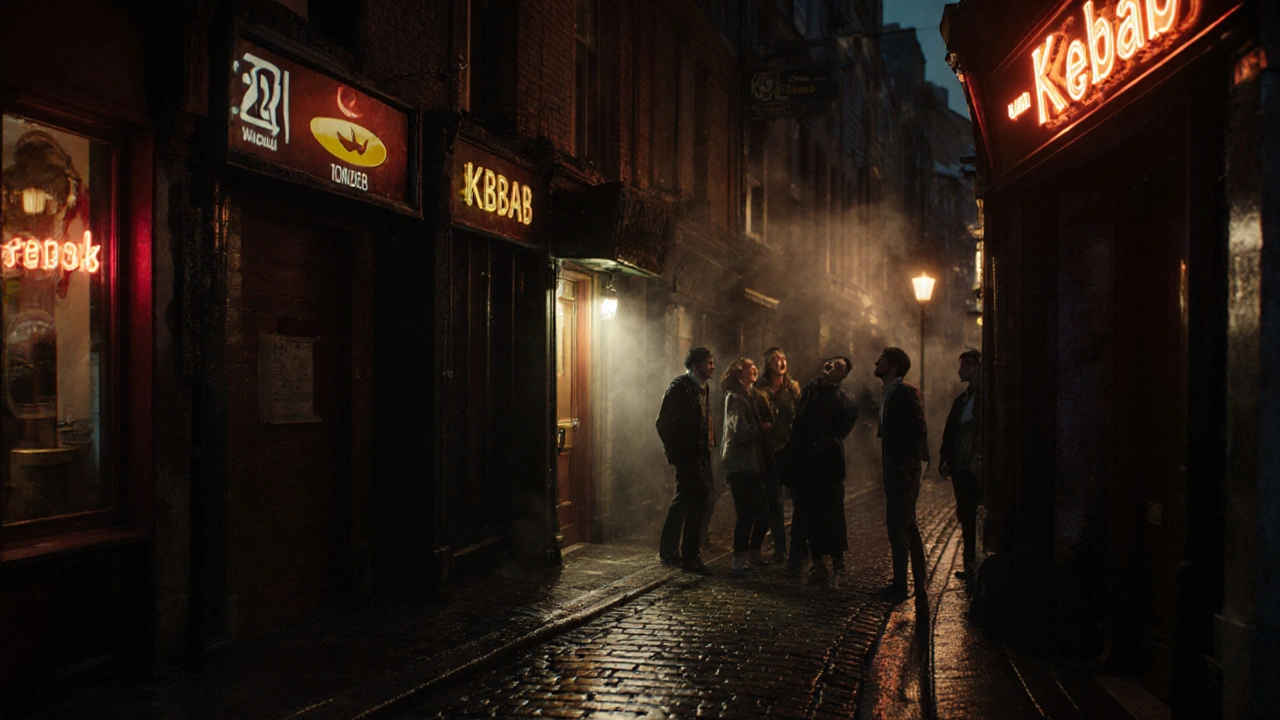
You’ve walked past dimly lit alleyways in Soho, heard bass thumping from behind a nondescript door in Shoreditch, seen strangers laughing over cocktails in a hidden speakeasy beneath a bookshop. That’s not just noise-that’s nightlife London breathing. And if you think it’s just about drinking and dancing, you’re missing the real magic.
What Makes London’s Nightlife So Different?
Most cities have bars. London has stories. Every neighborhood has its own rhythm. In Camden, you’ll find punk bands screaming into microphones while people in leather jackets sing along. In Mayfair, you’ll sip aged whiskey in velvet booths where CEOs and artists swap secrets. In Peckham, a Nigerian DJ spins afrobeats while the whole room moves like one body. There’s no single London night out-there are dozens, each with its own soul.
It’s not just about where you go. It’s about how you feel. The way the streetlights glow on wet pavement after midnight. The smell of fried food drifting from a 2 a.m. kebab shop. The sudden silence when a live jazz singer hits a note that stops everyone in their tracks. That’s the magic. And it’s not curated for tourists. It’s lived in.
The Real Types of Nightlife You’ll Find in London
Forget generic labels. London’s after-dark scene breaks into real, tangible experiences:
- Speakeasies and Hidden Bars - Think The Blind Pig in Fitzrovia or The Connaught Bar in Mayfair. You need a password, a reservation, or just the right friend. No signs. Just a knock. Inside, you’ll find cocktails made with house-infused gin and bartenders who remember your name.
- Live Music Venues - From the gritty basement of The Windmill in Brixton to the grand stage of O2 Academy Brixton, you’ll find indie bands, hip-hop artists, and jazz trios you’ve never heard of-and won’t forget.
- Club Nights with a Twist - Not just EDM. Try The Cross in Dalston for queer-friendly dance floors, or Mojo Club for soul and funk nights that start at 11 p.m. and end when the sun comes up.
- Pub Culture Reimagined - Traditional pubs still exist, but now they’ve got craft beer taps, board games, and live poetry. The Ten Bells in Spitalfields has been serving drinkers since 1820. Now it also hosts vinyl nights and storytelling circles.
- 24-Hour Eats - A night out isn’t complete without food. Wagamama stays open late, but the real gems are the family-run spots: Al Aseel in Whitechapel for shawarma, or Chinatown’s 24-hour dumpling houses where you can eat steaming pork buns at 3 a.m. with a side of laughter.
How to Find the Right Night Out for You
Don’t just Google “best clubs in London.” That list is full of paid ads and tourist traps. Here’s how real locals find their spots:
- Follow local Instagram accounts - Try @london.nightlife or @secretlondonbars. They post real events, not sponsored content.
- Ask the barista - Not the bouncer. The person making your flat white at 11 a.m. They know who’s playing where on Friday.
- Check community boards - Look at Time Out London’s weekly “Nightlife Picks” or the Londonist newsletter. They list underground events you won’t find anywhere else.
- Walk around after 9 p.m. - Sometimes the best night starts with no plan. Wander through Soho, Shoreditch, or Hackney. If you hear music, follow it. If you see a line of people smiling, join them.

What to Expect When You Step Into a London Night
First, the vibe. It’s not chaotic-it’s controlled chaos. People are there to connect, not just consume. You’ll see someone dancing alone, eyes closed, totally lost in the music. You’ll hear a group of strangers debating the best curry in town. You’ll catch a stranger’s eye and both laugh because you’re both trying not to spill your drink.
Don’t expect uniform dress codes. In some places, you’ll need smart shoes. In others, you’ll see people in hoodies and combat boots. The rule? Be yourself. No one cares if you’re wearing a suit or ripped jeans. They care if you’re open to the moment.
And yes, it can get loud. But not in a way that hurts. It’s the kind of noise that makes you feel alive. The bass vibrates in your chest. The crowd sings along to a song you didn’t know you loved. You leave with your ears ringing-and your heart full.
Pricing and Booking: No Surprises
Costs vary wildly. A pint in a West End pub? £6-£8. A cocktail at a hidden bar? £14-£20. Entry to a club? £10-£25, sometimes free before midnight. Most places don’t charge cover unless it’s a special event.
Booking is key for speakeasies and popular venues. Use Resy or Time Out’s booking tool. For clubs, check their Instagram stories-they often post last-minute guestlist links. And if you’re going out with a group, split the cost of a taxi. Uber is fine, but black cabs are cheaper after 2 a.m. and know the back routes.
Pro tip: Many venues have “ladies’ nights” or early bird discounts. Some start at 9 p.m. with free entry. Show up early, and you’ll get the best seats, the quietest vibe, and a better chance to talk to people before the crowd swells.
Safety Tips: Enjoy Without Worrying
London is generally safe, but nightlife has its own rules:
- Never leave your drink unattended. Even if you’re with friends. Someone could slip something in without you noticing.
- Use trusted transport. Stick to licensed black cabs or Uber. Avoid unmarked cars.
- Know your limits. London’s drinks are strong. A gin and tonic here isn’t like the one back home. Pace yourself.
- Have a plan. Know where you’re going before you leave. Save the address of your hotel and your friend’s phone number. Don’t rely on your memory after a few drinks.
- Trust your gut. If a place feels off, leave. No one will judge you for walking away.
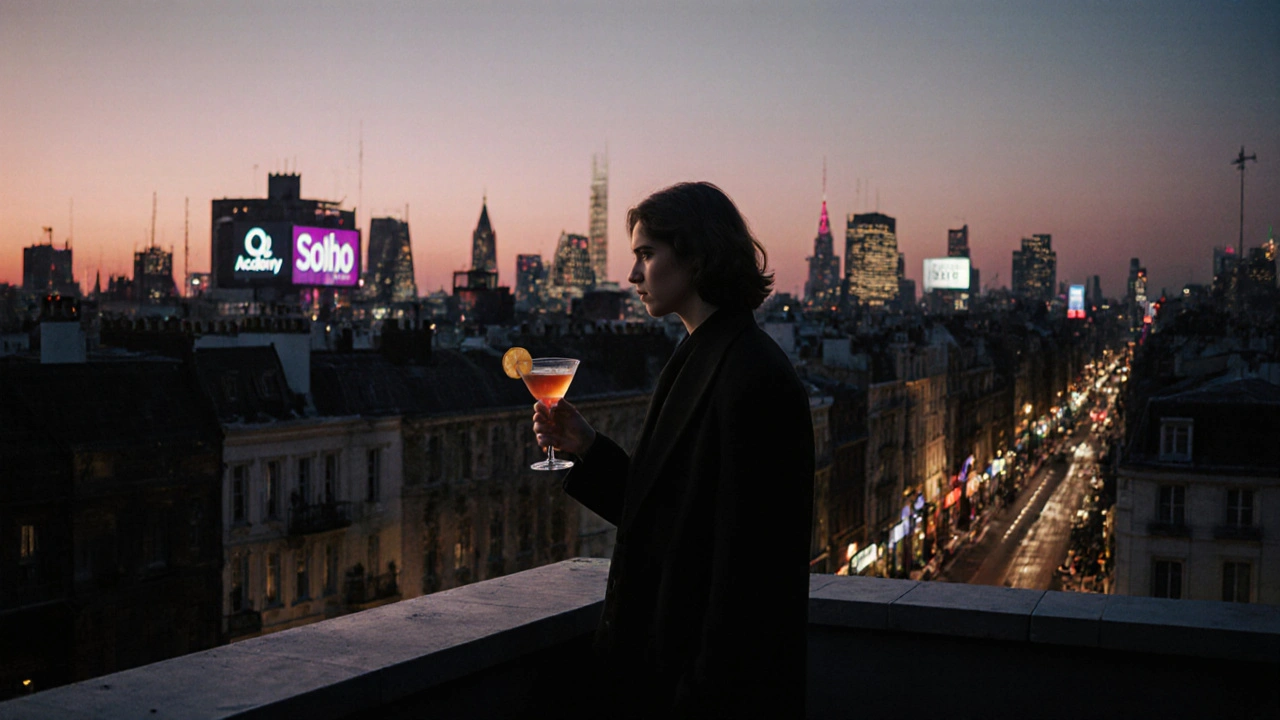
London Nightlife vs. Other Cities: What Sets It Apart?
| Feature | London | Berlin | New York | Tokyo |
|---|---|---|---|---|
| Open Hours | Bars until 2 a.m., clubs until 4 a.m. (some later) | Most clubs open until 6 a.m. or later | Clubs often close at 4 a.m., strict licensing | Bars close by 1 a.m., but izakayas stay open all night |
| Music Diversity | Extremely wide: jazz, grime, house, punk, afrobeats | Techno, electronic, experimental | Pop, hip-hop, EDM dominate | J-pop, city pop, ambient, karaoke |
| Entry Cost | £10-£25 on average | Often free or £5-£10 | $20-$50, sometimes cover | £10-£20, often includes one drink |
| Atmosphere | Eclectic, layered, storytelling-driven | Industrial, raw, no-frills | High-energy, glamorous, fast-paced | Quiet, ritualistic, respectful |
| Food After | 24-hour kebabs, dumplings, fried chicken | Currywurst, döner, late-night burgers | Bagels, pizza, bodegas | Ramen, yakitori, tonkatsu |
London doesn’t have one sound. It has hundreds. And it doesn’t force you into one style. You can go from a classical jazz set to a grime battle to a rooftop cocktail bar-all in one night. That’s the difference.
Frequently Asked Questions
Is London nightlife safe for solo travelers?
Yes, if you follow basic safety rules. London’s nightlife is used to solo visitors. Many venues, especially in areas like Shoreditch and Camden, have a welcoming vibe. Stick to well-lit streets, avoid isolated alleys after midnight, and let someone know where you are. Most bartenders and club staff will help if you look lost or unsure.
What’s the best night to go out in London?
Friday and Saturday are the busiest, but also the most vibrant. If you want a quieter, more authentic vibe, try Thursday. Many venues host special events on Thursdays-live bands, themed nights, or guest DJs-that aren’t as crowded. Sunday nights are surprisingly good too, especially in East London, where the crowd is more relaxed and the music is often better.
Do I need to dress up for London nightclubs?
It depends. In Mayfair or the West End, smart casual is expected-no trainers or hoodies. In Shoreditch, Dalston, or Peckham, you can wear whatever feels like you. Most clubs don’t have strict dress codes anymore. If you’re unsure, check the venue’s Instagram. They usually post photos of recent nights so you can see what people are wearing.
Are there quiet places to have a drink in London at night?
Absolutely. Try Bar Termini in Soho for classic cocktails in a 1950s-style setting. Or The Little Yellow Door in Notting Hill-tiny, cozy, and perfect for conversation. There are also rooftop bars like The Rooftop at The Standard where you can sip wine with city views and zero noise. Quiet doesn’t mean boring-it means intimate.
Can I find vegetarian or vegan food after midnight in London?
Yes. Places like Wagamama, Plant Power in Camden, and The Vegan Kind in Soho all serve plant-based food late. Even traditional kebab shops now offer vegan options. Just ask. London’s food scene has caught up-no one bats an eye anymore.
Ready to Experience It?
Don’t wait for the perfect night. Start with one. Pick a neighborhood you’ve never been to after dark. Walk in without a plan. Let the music pull you. Talk to someone at the bar. Say yes to the strange invitation. That’s how you find London’s magic-not by checking off clubs, but by letting the city surprise you.
Comments (8)
- Frank ZHANG
- November 8, 2025 AT 07:31 AM
Look, I’ve been to every major city’s nightlife scene, and London’s just overhyped. The speakeasies? All the same damn cocktail menus. The ‘authentic’ vibe? Paid actors in vintage coats pretending to be cool. I’ve had better nights in Detroit’s abandoned warehouses.
Stop romanticizing the chaos. It’s just expensive drinks with a side of Instagram filters.
- Sheri Gilley
- November 8, 2025 AT 20:00 PM
I just got back from a 3 a.m. dumpling run in Chinatown after a jazz set in Soho, and I’m still smiling. There’s something about how strangers become friends over greasy paper napkins and shared silence when the singer hits that high note.
You don’t need to ‘get it’ to feel it. Just show up. The city will meet you where you are.
- samir nassif
- November 9, 2025 AT 09:21 AM
One must interrogate the ontological underpinnings of this so-called ‘magic.’ Is it not merely the commodification of alienation, dressed in velvet and neon? The ‘stories’ you speak of are merely curated narratives sold to the bourgeoisie seeking existential validation through curated aesthetic experiences.
London’s nightlife is not a revelation-it is a symptom. A symptom of late-capitalist ennui, masquerading as liberation. The jazz singer who stops the room? She is not transcendent-she is exploited. The bartender who remembers your name? He is a data point in a behavioral algorithm.
You mistake atmosphere for meaning. You mistake volume for soul. And in doing so, you betray the very authenticity you claim to revere.
- Nitin Murali
- November 11, 2025 AT 00:32 AM
Most of these recommendations are tourist traps disguised as ‘underground.’ The Blind Pig? Overrated. The Connaught Bar? A glorified hotel lounge with a pretentious menu. Real London nightlife is in the backrooms of Turkish pubs in Walthamstow, where the DJ plays Turkish techno and no one speaks English.
You didn’t mention those. Because you don’t know them. You’re selling a fantasy.
- Timothy Mayle
- November 11, 2025 AT 16:28 PM
There’s a quiet truth here: nightlife isn’t about the place. It’s about the pause between heartbeats when the music drops and you realize you’re not alone.
That’s the real magic. Not the cocktails. Not the neon. Just… presence.
🙂
- David Blair
- November 12, 2025 AT 17:59 PM
Authentic urban nocturnal ecosystems like London’s represent a fascinating convergence of sociocultural heterogeneity, spatial democratization of leisure, and post-industrial adaptive reuse of architectural vernacular.
What’s often mischaracterized as ‘chaos’ is actually emergent social order-non-hierarchical, fluid, and deeply resilient. The 24-hour kebab shops? They’re not just food vendors; they’re circadian anchors for nocturnal communities.
Pro tip: The real cultural capital isn’t in the VIP section-it’s in the queue outside The Windmill at 1 a.m., where a 19-year-old from Lagos is debating postcolonial theory with a retired jazz trumpeter over lukewarm lager. That’s the uncurated archive of urban memory.
Also: vegan shawarma is now standard in 87% of East London late-night spots. Data-driven fact. 📊
- Stephen Robinson
- November 12, 2025 AT 19:24 PM
Wait-you said ‘no dress codes’? Try showing up in sneakers to The Connaught. They’ll turn you away like you’re a feral raccoon.
And ‘ladies’ nights’? That’s just gendered pricing disguised as inclusion. Also, ‘trust your gut’? My gut says if you have to Google ‘best clubs,’ you’re already lost.
And why is everyone ignoring the fact that most of these ‘hidden’ bars are owned by the same corporate conglomerate that runs the tourist pubs? The ‘authentic’ is just a marketing tier now.
- Maureen Addison-Smith
- November 13, 2025 AT 17:55 PM
Thank you for this nuanced, deeply felt exploration. I found myself moved by the description of the jazz singer stopping the room-it evokes a profound sense of shared humanity that is increasingly rare in our digital age.
As someone who has spent years studying urban sociability, I appreciate how you’ve framed nightlife not as consumption, but as communion. The quiet rooftop bars, the 3 a.m. dumpling houses, the unspoken solidarity between strangers trying not to spill their drinks-these are the micro-moments that stitch communities together.
Perhaps the most radical act in modern London is not dancing until dawn, but simply being present without a screen.
I would add: many of the best nights are found in church halls repurposed for poetry slams, or community centers in Peckham hosting open-mic nights where the audience claps louder than the performers. These spaces, often overlooked, are the quiet heartbeat of the city’s soul.

